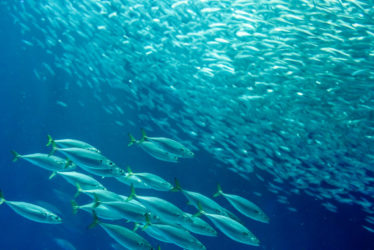
Event Recap: IPCC Special Report on the Ocean and Cryosphere in a Changing Climate
On October 2, the Wilson Center’s Polar Institute, United Nations Foundation, and Arctic 21 hosted an event on the Intergovernmental Panel on Climate Change’s (IPCC) recently released special report on the oceans and cryosphere.
Ko Barrett, IPCC Vice Chair, gave the keynote presentation. “The world’s oceans and cryosphere have been ‘taking the heat’ from climate change for decades,” said Barrett. The oceans have absorbed more than 90 percent of excess heat in the climate system. That means that small glaciers will lose more than 80 percent of their current ice mass by 2100 if emissions continue, and arctic sea ice will continue to decline every month of the year. Both melting glaciers and sea ice are contributing to sea level rise, which Barrett said, during the 20th century rose by 15 centimeters, but levels are expected to rise by 1.10 meters by 2100.
During the first panel Ko Barrett; Mark Eakin, contributing author; Robert DeConto, lead author; and Michael Oppenheimer, coordinating lead author discussed the key findings of the report. The panel was moderated by Monica Media, founder and publisher of Our Daily Planet.
The three main takeaways from the panel are, coral is suffering from severe bleaching, sea ice is melting as ocean temperatures rise, and sea levels are rising as a result of ice melt. While we have known for some time that sea levels were rising, according to DeConto, previous increases in sea levels were a result of warming water, which expands; now sea levels are rising because ice is melting.
Also discussed during the panel was the growing acidification of the ocean and the effect on sea life. More acidic water effects the shells of shellfish. One of the panelists posited that continued acidification has the potential to effect coastal communities that make seafood a staple of their diets.
The second panel was a discussion between Sherri Goodman, Senior Fellow at the Wilson Center, and Norwegian Ambassador to the US Kåre Aas. During his opening remarks, Ambassador Aas said that Norway plans to cut emissions to zero by 2050, and Norway is increasing efforts to capture carbon. Also discussed were the geopolitical challenges posed to Norway by an opening Arctic. Ambassador Aas said that Russian has increased operations in the Arctic, but that Norway is NATO’s eyes and ears in the north. The challenge for NATO will be maintaining communications and maritime activity. Finally, Ambassador Aas offered that while China is pushing the Silk Polar Road, there is an opportunity to work with China in the Arctic.
In closing, Rafe Pomerance—Chair of Arctic 21—offered some brief remarks. He made two poignant comments. First, for the U.S. to be an effective climate change negotiator, Congress must first act on implementing language. Second, “the fate of Greenland is the fate of Miami.” As ice melts from Greenland and sea levels rise in Florida, people will be affected and it’s time to do something about it.
The major takeaways of the IPCC Special Report—oceans are getting warmer, sea ice is melting as temperatures rise, and sea levels are rising—are not earth-shattering revelations. The report and Wilson Center event, however, did a good job of tying the physical sciences to the social sciences, and explaining how these changes will affect people.
The American Security Project (ASP) has written about the effects of warmer temperatures, melting sea ice, and rising sea levels on human security for years. Climate change will affect people living from Florida to Alaska and the South Pacific to Russia. It will change what people do for a living, where they live, what they eat, among other things. When talking about the physical science and changes to the environment, it’s critical not to forget people and how these changes will affect them.





